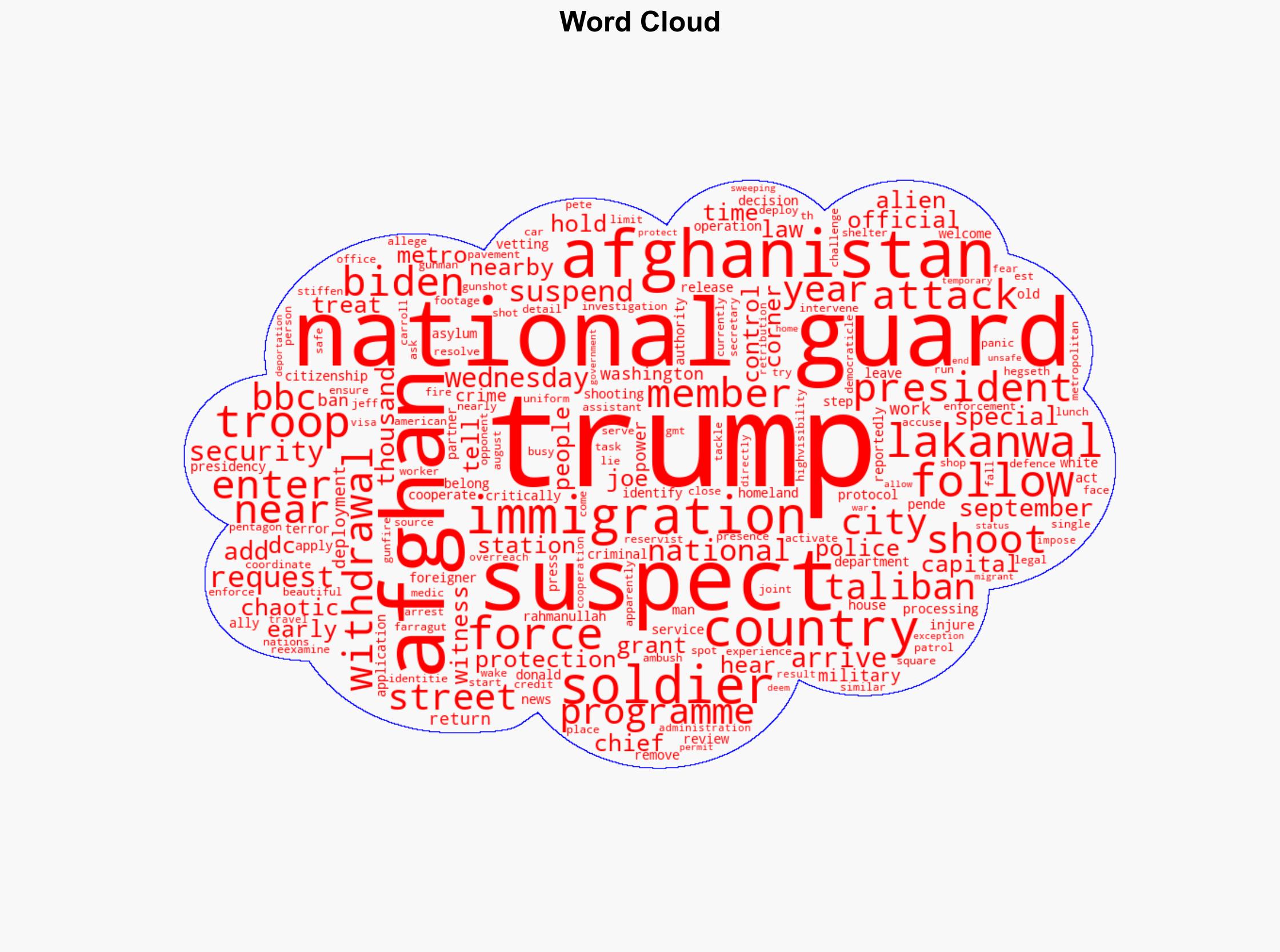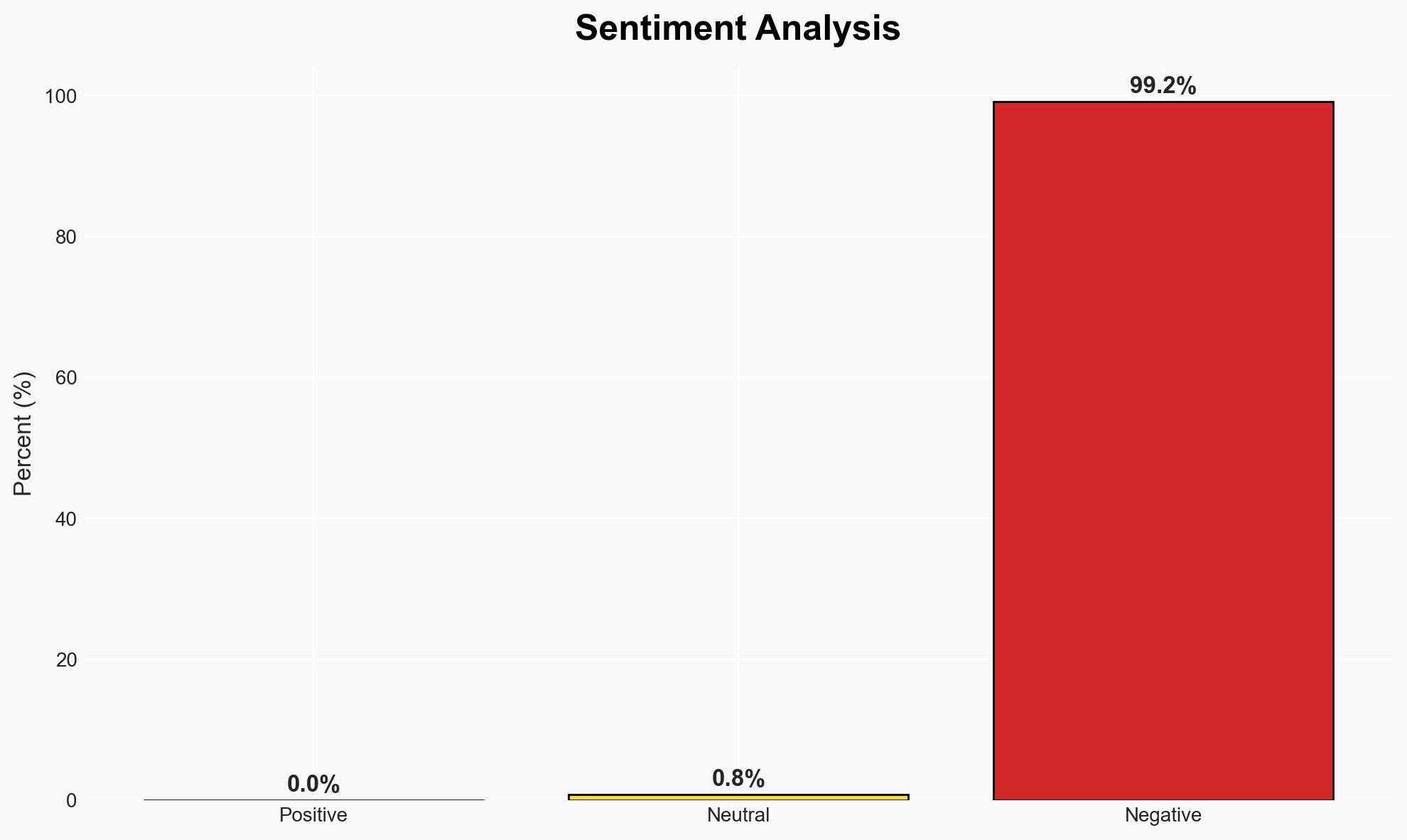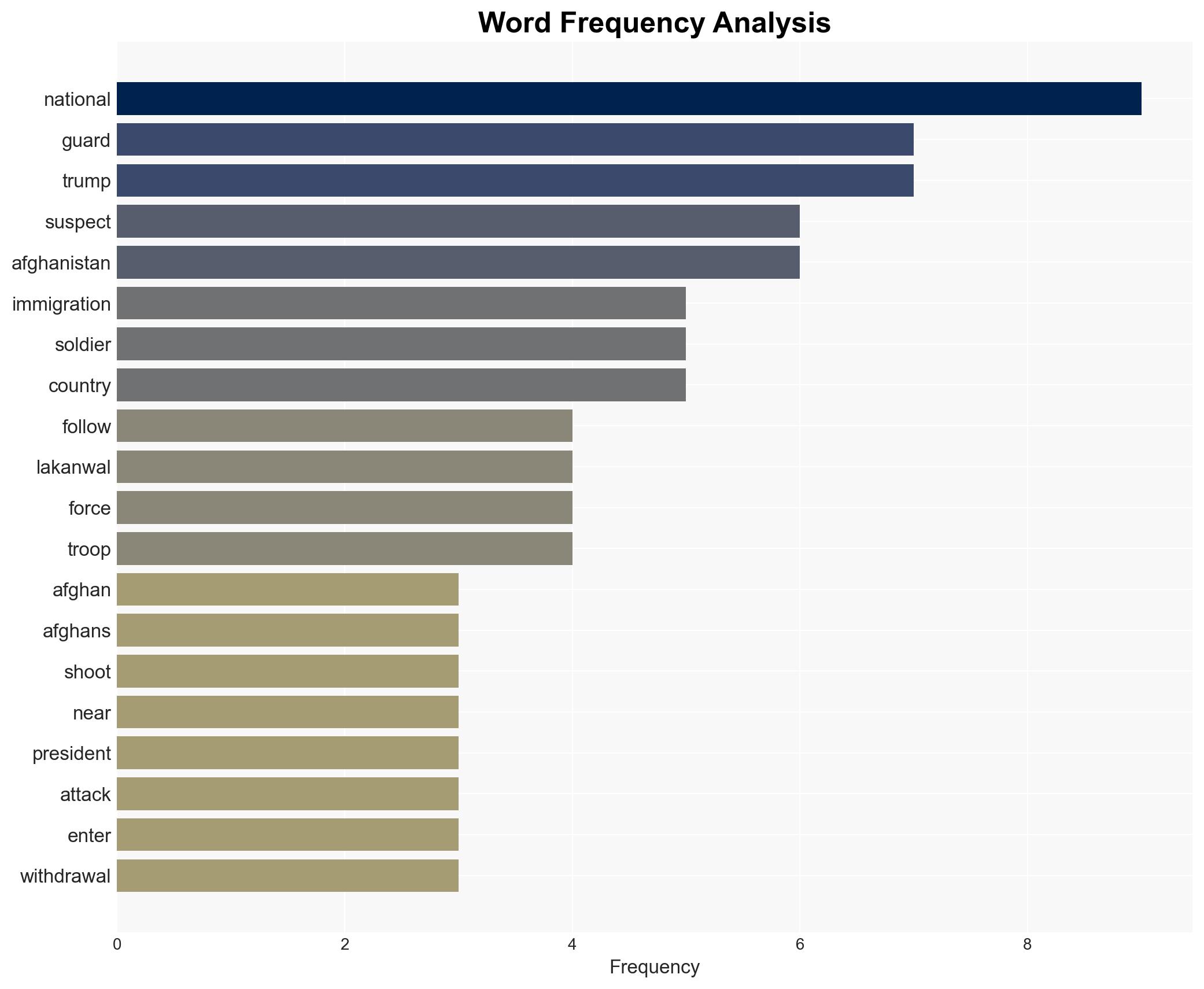US halts Afghan immigration applications following National Guard shooting incident
Published on: 2025-11-27
AI-powered OSINT brief from verified open sources. Automated NLP signal extraction with human verification. See our Methodology and Why WorldWideWatchers.
Intelligence Report: US suspends immigration requests for Afghans after National Guard shooting
1. BLUF (Bottom Line Up Front)
The suspension of Afghan immigration requests following a shooting incident involving a National Guard member in Washington, D.C., is likely a precautionary measure pending a review of security protocols. This action affects Afghan nationals seeking immigration or asylum in the U.S. and could have broader implications for U.S.-Afghan relations. The most likely hypothesis is that this suspension is a temporary response to a perceived security threat, with moderate confidence due to incomplete information on the suspect’s motives and affiliations.
2. Competing Hypotheses
- Hypothesis A: The suspension is a direct response to the shooting incident, aimed at reassessing security vetting processes for Afghan immigrants. Supporting evidence includes the immediate suspension following the incident and the focus on security protocol review. Contradicting evidence is the lack of clarity on whether the suspect’s actions were ideologically motivated.
- Hypothesis B: The suspension is part of a broader policy shift under the current administration, possibly influenced by previous immigration policies. Supporting evidence includes historical precedence of immigration restrictions following security incidents. Contradicting evidence is the specific timing and focus on the recent shooting incident.
- Assessment: Hypothesis A is currently better supported due to the direct link between the incident and the suspension decision. Key indicators that could shift this judgment include new information on the suspect’s motives or changes in broader immigration policy rhetoric.
3. Key Assumptions and Red Flags
- Assumptions: The shooting incident is directly linked to the suspension decision; the suspect acted independently; the suspension is temporary pending security review.
- Information Gaps: Detailed information on the suspect’s motives and affiliations; the duration and scope of the suspension; potential policy changes in immigration processing.
- Bias & Deception Risks: Potential bias in attributing the suspension solely to the shooting incident without considering broader policy factors; risk of misinformation regarding the suspect’s background and motives.
4. Implications and Strategic Risks
This development could lead to increased scrutiny of Afghan immigrants and asylum seekers, potentially affecting U.S.-Afghan relations and domestic security policies.
- Political / Geopolitical: Strained diplomatic relations with Afghanistan; potential backlash from advocacy groups and international partners.
- Security / Counter-Terrorism: Heightened security measures in immigration processes; potential increase in domestic security incidents if perceived as discriminatory.
- Cyber / Information Space: Possible exploitation of the incident in information operations by adversaries to sow discord or influence public opinion.
- Economic / Social: Impact on Afghan communities in the U.S.; potential economic implications for sectors reliant on immigrant labor.
5. Recommendations and Outlook
- Immediate Actions (0–30 days): Enhance monitoring of Afghan immigration cases; review and update security vetting protocols; engage with Afghan community leaders to mitigate tensions.
- Medium-Term Posture (1–12 months): Strengthen partnerships with Afghan authorities to improve vetting processes; invest in community outreach programs to support integration and counter radicalization.
- Scenario Outlook: Best: Suspension lifted with improved security measures; Worst: Prolonged suspension leading to diplomatic fallout; Most-Likely: Temporary suspension with gradual resumption of immigration processing.
6. Key Individuals and Entities
- Rahmanullah Lakanwal (suspect)
- U.S. Citizenship and Immigration Services
- Department of Homeland Security
- National Guard
- President Joe Biden
- Former President Donald Trump
7. Thematic Tags
National Security Threats, immigration policy, national security, counter-terrorism, U.S.-Afghanistan relations, security vetting, domestic security, diplomatic relations
Structured Analytic Techniques Applied
- Cognitive Bias Stress Test: Expose and correct potential biases in assessments through red-teaming and structured challenge.
- Bayesian Scenario Modeling: Use probabilistic forecasting for conflict trajectories or escalation likelihood.
- Network Influence Mapping: Map relationships between state and non-state actors for impact estimation.
Explore more:
National Security Threats Briefs ·
Daily Summary ·
Support us





